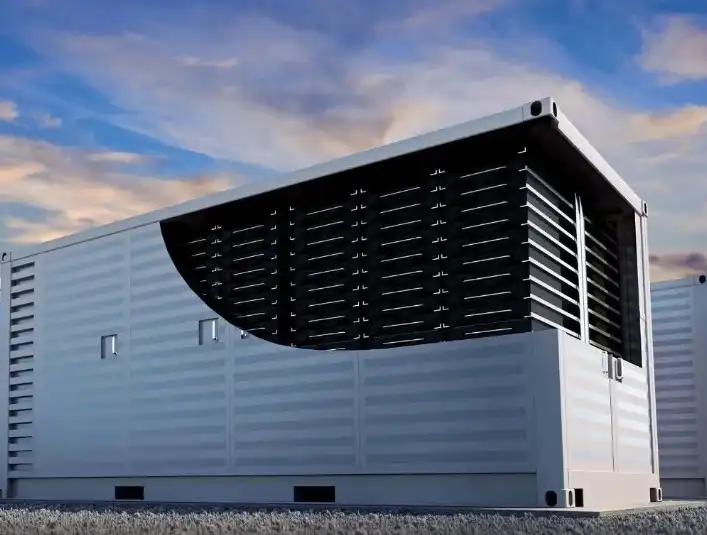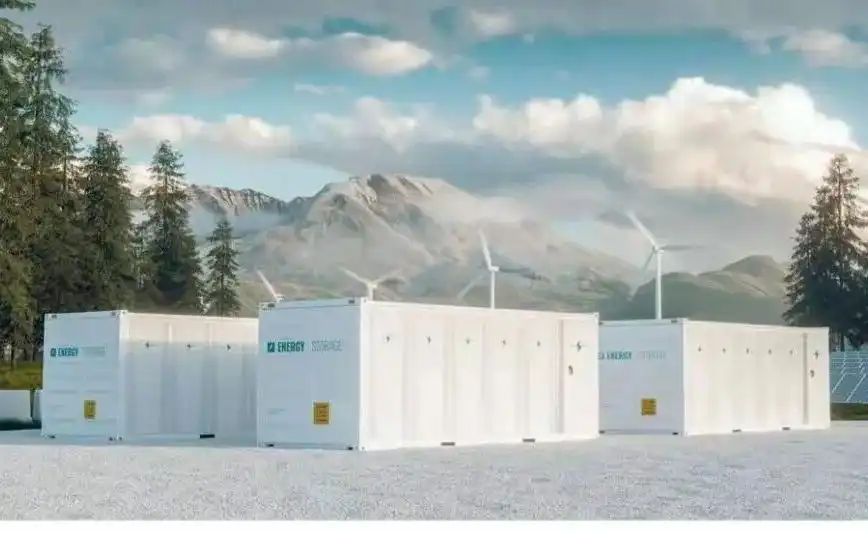Shared energy storage ushers in strong development and high-quality development urgently needs top-level design
The development prospects of shared energy storage are very broad. However, if shared energy storage wants to achieve high-quality development, relevant departments still need to make top-level designs to achieve optimal allocation of shared energy storage resources and reduce the construction cost of shared energy storage systems.

The "2024 China Shared Energy Storage Development White Paper"(hereinafter referred to as the "White Paper") recently released by the China Chemical and Physical Power Supply Industry Association shows that under conservative scenarios, the new scale of shared energy storage is expected to reach 60.64GW from 2024 to 2028. By 2030, the proportion of newly added shared energy storage market will reach 85% of the new new energy storage scale, and the cumulative installed scale of shared energy storage will account for about 65% of the total cumulative new energy storage scale.
According to the industry insiders interviewed, sharing energy storage can improve the stability and efficiency of the power grid, and establish a more flexible matching mechanism between large-scale new energy development and power supply demand. The development prospects are very broad. However, if shared energy storage wants to achieve high-quality development, relevant departments still need to make top-level designs to achieve optimal allocation of shared energy storage resources and reduce the construction cost of shared energy storage systems.
Will usher in strong development
The "White Paper" shows that based on power scale, the new grid connection scale of shared energy storage projects will be further expanded in 2023, adding 12.41GW/24.46WH, accounting for 54.91% of the scale of new energy storage projects newly put into operation last year, an increase of 10.91% compared with 44% in 2022. Among them, the installed power of shared energy storage newly put into operation in East China and Southwest China accounts for approximately 46.46% of the country's total.
“2023年共享储能并网规模扩大,显示出共享储能在新型储能市场中的地位和重要性在不断上升。”中 国 化学与物理电源行业协会储能应用分会秘书长刘勇对《中国能源报》记者表示,“ Shared energy storage is gradually moving from pilot demonstration to engineering, scale, systematization and industrialization, and will usher in a golden period of rapid development in the future.。”
So far, more than 15 provinces and regions including Shandong, Hunan, Qinghai, Liaoning, Anhui, Henan, Zhejiang, Shanxi, Yunnan, Gansu, Hebei, and Xinjiang have introduced policies related to shared energy storage.
Recently, news about shared energy storage has also increased day by day. For example, the first phase of the Leizhou centralized shared energy storage power station, the largest in South China, has been put into operation for power transmission; the shared energy storage project in Jingyuan County, Ningxia, with a total investment of 460 million yuan has started; Yunnan's first independent shared energy storage demonstration project has begun construction...
Talking about the construction of shared energy storage projects in full swing, Wu Junhong, a senior expert in the energy industry, told a reporter from China Energy News that the essence of shared energy storage is a demand created by a subjective management system, not an objective demand in power system technology or business model. For example, bike-sharing is popular because it can meet people's needs for the "last mile" of travel, and users are also willing to pay for the convenience provided by bike-sharing. The most important foundation for shared energy storage to survive is the policy of mandatory allocation of energy storage for new energy power stations. Therefore, the necessity and economy of sharing energy storage are essentially the necessity and economy of mandatory allocation of energy storage for new energy power stations.
What cannot be ignored is that shared energy storage is different from the new energy mandatory storage allocation model. It is a new business model that combines energy storage technology and shared economic concepts. It leases idle energy storage resources at a certain price for a certain period of time to users who need energy storage services. In addition to capacity leasing, shared energy storage power stations can also directly sign grid-connected scheduling agreements with power grid operators as independent entities, and incorporate them into power grid-connected operation and auxiliary service management.
There is an urgent need to understand the demand
At present, although there is no official definition of shared energy storage at the national level, it breaks the original traditional corresponding relationship between one energy storage station and one power station, forming one energy storage station corresponding to multiple new energy power stations. The "1 to N" relationship.
Li Yaowang, a researcher at the Institute of Low Carbon at Tsinghua Sichuan Institute, said in an interview with a reporter from China Energy News that energy storage, as an important flexibility resource, plays a pivotal role in new power systems, and the demand for energy storage in power systems is increasing day by day. However, although the cost of energy storage has been significantly reduced in the past 10 years, overall, its cost remains high, and in some application scenarios, the investment recovery path for energy storage is still unclear. The shared energy storage model takes advantage of the "scale effect" of investment and the complementarity of energy storage needs of different users to reduce the cost of energy storage use, which may turn application scenarios that were originally unprofitable into profitable scenarios.

Looking at the shared energy storage operation business models that have been implemented across the country, there are mainly four categories.:The first is to obtain lease fees by providing energy storage capacity leasing to new energy power stations; the second is to obtain income by participating in auxiliary services; the third is to achieve peak-valley price difference profits by participating in power spot market transactions; and the fourth is to benefit from capacity compensation.
In Wu Junhong's view, shared energy storage emphasizes providing energy storage capacity leasing services to multiple new energy power stations. When some places allow them to lease new energy capacity in order to increase the yield of shared energy storage, they also allow them to participate in the power market or subsidize capacity electricity prices. These measures are policies formulated around the development and growth of this industry. Therefore, the prosperity of shared energy storage development has emerged. But how much value shared energy storage can create for the power system remains debatable.
“当一些地方对于共享储能的商业模式仅停在其容量租赁且该地区对于新能源强制配储的政策没那么严苛时,这些地方的共享储能很难有投资价值。”吴俊宏对《中国能源报》记者表示,因此, The biggest challenge for shared energy storage is first of all whether the power system needs so much energy storage, whether the power system needs to share energy storage, and secondly whether there are enough safeguard policies formulated based on objective technical and economic needs. 。
Industry insiders believe that the forecast of demand for shared energy storage depends on many factors, including the development of new energy, technological progress, policy support and market mechanisms. As these factors continue to change, the demand for shared energy storage will There are significant changes. By accurately predicting shared energy storage demand, energy resources can be better scheduled and managed, energy efficiency can be improved, and energy waste can be reduced.
Top-level design needs to be done
From a realistic perspective, the shared energy storage power station can be built independently by one investment entity, such as a power company, grid-related enterprise or other private enterprise, or it can be jointly built by multiple investment entities. However, at present, the status of each entity is unequal and the information is incomplete when participating in the sharing, which has become an important constraint for all parties to participate in the sharing of energy storage. The scientific and reasonable operating model of shared energy storage is not yet mature; the trading model of encouraging the sharing of energy storage is also imperfect. Due to the different types of energy storage participating in the sharing, the complex interest relationships among all parties need to be clarified urgently, and a fair and efficient trading model has yet to be established.
Li Yaowang believes that in the future, it is necessary to strengthen research and demonstration work in areas such as optimal planning and optimal operation of energy storage under the shared energy storage model, and explore a mature and scalable shared energy storage business model and planning and operation technology.
Liu Yong bluntly told reporters that at present, shared energy storage faces various technical and economic challenges on the road to commercialization, and lacks clearer policy support and formulation of relevant standard systems in terms of energy storage technology and equipment research and development and application demonstration, power market construction and energy storage price mechanism. "It is recommended to use shared energy storage under the guidance of diversified market mechanism construction based on the principles of ensuring supply, ensuring safety, and ensuring consumption, to maximize the charging and discharging times of shared energy storage, and to ensure that shared energy storage can be adjusted as it can be, and adjust it more." Adjust and use it more."
采访中,业内人士一致认为,It is urgent to improve top-level design to provide a fair and transparent market environment for shared energy storage to stimulate its market vitality and enhance market competitiveness 。“做好共享储能的顶层设计,主要是指从规划上客观研判本地的灵活性资源,进而判断其是否足够、是否需要配置大型储能电站满足系统的调峰,同时研判需要设置共享储能的电力系统节点而非无序开发。”吴俊宏建议,当确有必要时,一方面做好共享储能的保障性政策,另一方面建议公开公平优选投资方且由主管部门协调解决接入、用地等问题,避免增加共享储能投资建设的非技术性成本。
